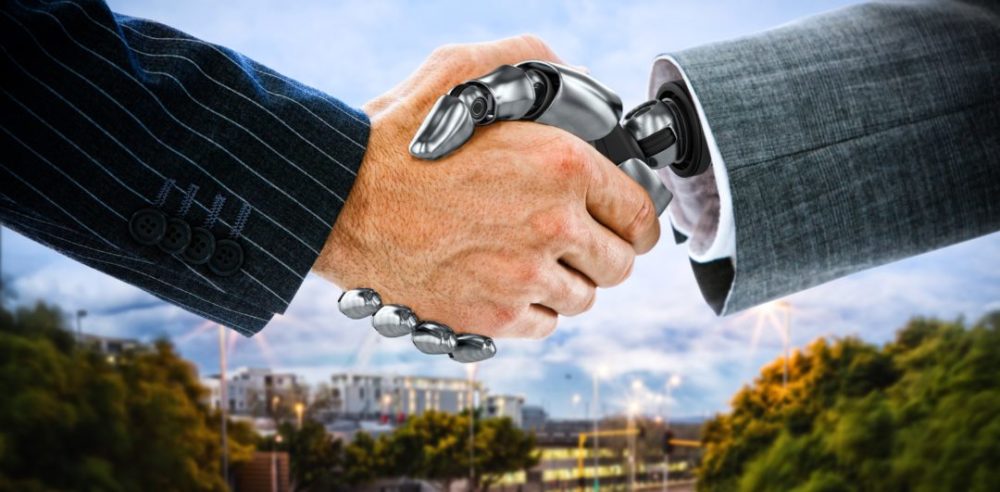As artificial intelligence (AI) and machine learning (ML) continue to become more and more prevalent among businesses, widespread discussions have arisen among companies as to how the technologies can be applied to everyday situations. And as these applications become more common, we’ll inevitably need to get up to speed on some new terminologies too, starting with one of the industry’s favourites — ‘cobots’.
Cobots, or ‘collaborative robots,’ will come in many shapes and forms. From sophisticated software-based helper bots (extensions of chatbots and virtual assistants) to the more physical automated robotic tools that are revolutionising the manufacturing industry, there are plenty of options to suit businesses of all sizes and across all sectors.
The intelligent work buddy we all need
All of us are going to have to get used to working closely with intelligent machines as very soon cobots will be our new office buddies.
Cobot brains are composed of software-based virtual services that form the synapses of ‘thought’, otherwise known as processing and data analytics. Similar to a childhood Tamagotchi, cobots are not completely independent systems — they require feeding and watering, with their regular meals comprised of software updates, exposure to new datasets and security patches.
The history of the chatbot: Where it was and where it’s going
For those that are uncomfortable by the idea of cobots — and of course some people will be — the fact is that they have been in close proximity already, quietly looking after humans for years in the form of smartphones, tablets and desktop machines, all using AI to filter through information to stop threats in our email to sending us the latest offers for our supermarket shop.
Taking this one step further, they not only protect users from a potential virus, but can also improve employee experiences at work, intuitively helping to manage work schedules, actions and business decisions.
As DXC Technology’s Marc Wilkinson writes in Wired: “For businesses, the promise of AI is that [intelligent assistants] will be embedded across all aspects of the organisation. Such agents will analyse data, discover patterns over time and then make decisions based on predictive analysis. The outcome? The application of AI on this level will make businesses not only more efficient, but also more profitable.”
Responsibility and social norms
As great as all this sounds, there is a responsibility factor to consider. At the same time as feeding data into cobot brains, we need to also be enabled to reflect a consciousness of and appreciation for society’s acceptable behavioural norms.
To ensure this happens effectively, we will need to be able to assess and measure individual workers’ skills in an ever more granular and mathematical way, as cobots will need to be able to assess any risk factors in regard to judgements they give to an individual worker. And these will be based on their skills, background and other competencies before more automation of this kind is engineered into our lives.
Thinking globally as well, depending on the location of cobots the programming will need to take into account different cultural, behavioural and ethical norms, which is a whole topic unto itself.
Coexisting with cobots
We must consider how cobots and people will coexist at work as cobots take on the more mundane tasks in the new world of automated controls that drive digital workflows. And how going forward these workflows – whether they be software based, hardware based, or a combination of both – will be implemented in the modern workplace.
Some have argued that to get the best from this new way of working we should assign individual workers a rank or score based on their workplace competency. A methodology that, if accepted, could help find the engineering point at which to apply cobot technology to an individual’s job role.
Scaling RPA: before automating processes, improve them
DXC’s Mark Wilkinson advocates that we need this level of detail because a really smart cobot that runs on fine-tuned machine learning models will add a new level of workplace personalisation to our daily routines that could make us better at our jobs. These ‘intelligent agents’ would be so attuned to our workplace needs as individuals that they would be able to make our lives easier by taking on the likes of automatically flagging important tasks, scheduling meetings and interpreting emails.
Furthermore, with cobots in the office, there are no physical boundaries, its software can span cross-functional teams and geographies, opening up the possibility of a new global digital workflow. Team actions in Dubai could align in near real-time with UK or US offices and work 24/7 on every time zone.
Helping the environment one cobot at a time
Whether you’re bought into it yet or not, cobot technology is developing fast, and we’re getting a better understanding of robotic processes and what they can actually do to make work, work better. We can see the transition from robotic process automation (RPA), which allows us to program home heating controls, for example, based on defined patterns, to intelligent robotic process automation (IRPA, or just IPA if you’re a beer fan), where home heating controls start to program themselves for optimum usage and efficiency based upon observed patterns of use. Cobots have IRPA in their ‘DNA’ from the get-go.
Don’t be an RPA tourist, implement effective change management
Most of us have got used to other intelligent technology such as self-driving cars, which will seem almost natural in the immediate years to come as they become mainstream, and the same will go for cobots. In the same way that you went from reading a map in the car and now automatically turn the GPS on, we will think that cobots and intelligent assistants are quite standard in half a decade’s time. You get to a point where you just expect a new technology to be there and the workplace is somewhere we can all benefit from it with cobots by our side.

Written by Chris Pope, VP Innovation, ServiceNow







